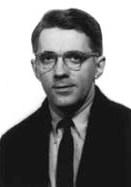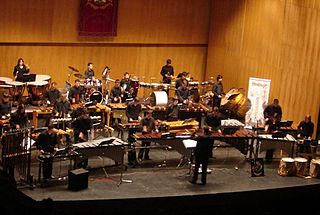
Musical composition can refer to an original piece or work of music, either vocal or instrumental, the structure of a musical piece or to the process of creating or writing a new piece of music. People who create new compositions are called composers. Composers of primarily songs are usually called songwriters; with songs, the person who writes lyrics for a song is the lyricist. In many cultures, including Western classical music, the act of composing typically includes the creation of music notation, such as a sheet music "score", which is then performed by the composer or by other musicians. In popular music and traditional music, songwriting may involve the creation of a basic outline of the song, called the lead sheet, which sets out the melody, lyrics and chord progression. In classical music, orchestration is typically done by the composer, but in musical theatre and in pop music, songwriters may hire an arranger to do the orchestration. In some cases, a pop or traditional songwriter may not use written notation at all and instead compose the song in their mind and then play, sing or record it from memory. In jazz and popular music, notable sound recordings by influential performers are given the weight that written or printed scores play in classical music.

David Eugene Tudor was an American pianist and composer of experimental music.

John Milton Cage Jr. was an American composer and music theorist. A pioneer of indeterminacy in music, electroacoustic music, and non-standard use of musical instruments, Cage was one of the leading figures of the post-war avant-garde. Critics have lauded him as one of the most influential composers of the 20th century. He was also instrumental in the development of modern dance, mostly through his association with choreographer Merce Cunningham, who was also Cage's romantic partner for most of their lives.
Sheet music is a handwritten or printed form of musical notation that uses musical symbols to indicate the pitches, rhythms, or chords of a song or instrumental musical piece. Like its analogs – printed books or pamphlets in English, Arabic, or other languages – the medium of sheet music typically is paper. However, access to musical notation since the 1980s has included the presentation of musical notation on computer screens and the development of scorewriter computer programs that can notate a song or piece electronically, and, in some cases, "play back" the notated music using a synthesizer or virtual instruments.

4′33″ is a modernist composition by American experimental composer John Cage. It was composed in 1952 for any instrument or combination of instruments; the score instructs performers not to play their instruments throughout the three movements. It is divided into three movements, lasting 30 seconds, two minutes and 23 seconds, and one minute and 40 seconds, respectively, although Cage later stated that the movements' durations can be determined by the musician. As indicated by the title, the composition lasts four minutes and 33 seconds and is marked by a period of silence, although ambient sounds contribute to the performance.

Vexations is a musical work by Erik Satie. Apparently conceived for keyboard, it consists of a short theme in the bass whose four presentations are heard alternatingly unaccompanied and played with chords above. The theme and its accompanying chords are written using enharmonic notation. The piece is undated, but scholars usually assign a date around 1893–1894 on the basis of musical and biographical evidence.
Graphic notation is the representation of music through the use of visual symbols outside the realm of traditional music notation. Graphic notation became popular in the 1950s, and can be used either in combination with or instead of traditional music notation. Graphic notation was influenced by contemporary visual art trends in its conception, bringing stylistic components from modern art into music. Composers often rely on graphic notation in experimental music, where standard musical notation can be ineffective. Other uses include pieces where an aleatoric or undetermined effect is desired. One of the earliest pioneers of this technique was Earle Brown, who, along with John Cage, sought to liberate performers from the constraints of notation and make them active participants in the creation of the music.

A percussion ensemble is a musical ensemble consisting of only percussion instruments. Although the term can be used to describe any such group, it commonly refers to groups of classically trained percussionists performing primarily classical music. In America, percussion ensembles are most commonly found at conservatories, though some professional groups, such as Nexus and So Percussion exist. Drumlines and groups who regularly meet for drum circles are two other forms of the percussion ensemble.
Howard While Skempton is an English composer, pianist, and accordionist.
Traditional Filipino games or indigenous games in the Philippines are games that are played across multiple generations, usually using native materials or instruments. In the Philippines, due to limited resources for toys, children usually invent games that do not require anything but players. There are different kinds of Filipino traditional games which are well-suited for kids, and the games also stand as one of the different cultural and traditional games of the Philippines. Due to the variety of skills used in these games, they serve an important purpose in the physical and mental development of Filipino children. These games are also an important part of Filipino culture.
Indeterminacy is a composing approach in which some aspects of a musical work are left open to chance or to the interpreter's free choice. John Cage, a pioneer of indeterminacy, defined it as "the ability of a piece to be performed in substantially different ways".
Music of Changes is a piece for solo piano by John Cage. Composed in 1951 for pianist and friend David Tudor, it is a ground-breaking piece of indeterminate music. The process of composition involved applying decisions made using the I Ching, a Chinese classic text that is commonly used as a divination system. The I Ching was applied to large charts of sounds, durations, dynamics, tempo and densities.
Song Books is a collection of short works by John Cage, composed and compiled by the composer in 1970. It contains pieces of four kinds: songs, songs with electronics, directions for a theatrical performance, and directions for a theatrical performance with electronics. "Any of these may be performed by one or more singers."
American avant-garde composer John Cage (1912–1992) began composing pieces for solo prepared piano around 1938–40. The majority of early works for this instrument were created to accompany dances by Cage's various collaborators, most frequently Merce Cunningham. In response to frequent criticisms of prepared piano, Cage cited numerous predecessors. In the liner notes for the very first recording of his most highly acclaimed work for prepared piano, Sonatas and Interludes, Cage wrote: "Composing for the prepared piano is not a criticism of the instrument. I'm only being practical." This article presents a complete list of Cage's works for prepared piano, with comments on each composition. All of Cage's indeterminate works for unspecified forces can also be performed on or with Prepared Piano.
Music for Piano is a series of 85 indeterminate musical compositions for piano by American avant-garde composer John Cage. All of these works were composed by making paper imperfections into sounds using various kinds of chance operations.
Time Structured Mapping (TSM) is a score based system created and used by the composer Pete M Wyer. It uses the bar-lines found in conventional musical scores to indicate durational periods during which performers, who may include actors, singers, dancers, poets as well as musicians, are given instructions, which may include conventional musical scoring or improvisational guidelines. The system allows large and sometimes disparate groups to improvise together coherently, or to combine improvisation with scored music or with other media. It has been used to get orchestras, including the Orchestra of the Swan, to improvise effectively and in educational projects, to combine student musicians with professionals, such as with Welsh National Opera and to combine other media such as dance and poetry with musical improvisation in a structured form, such as with Miro Dance Theatre, Philadelphia.

Music for Electric Metronomes is an avant-garde aleatoric composition written in 1960 by Japanese composer Toshi Ichiyanagi for any number of performers between three and eight. The piece involves the manipulation of electric metronomes, followed by various unspecified sounds and actions. It is a very theatrical piece, and reflects Ichiyanagi's affiliation with Fluxus, an experimental art movement from the sixties. The only true scored "instrument" is an electric metronome for each individual player, though the varying sounds and/or actions may involve many different instruments and objects at the discretion of the performer. Because the graphic notation of the score—a series of dashes, lines, and numbers in an erratic pattern of connected paths—leaves room for personal interpretation and expression, each performance is unique, and almost certainly cannot be reproduced. There is no conductor for the performance. It has been recorded on the album Toshi Ichiyanagi: 1960's & 1990's. In a review of a performance by the S.E.M. Ensemble in 1992 at the Paula Cooper Gallery, the music critic of The New York Times, Alex Ross, described the piece as "merely a timid, spastic prelude to György Ligeti's monumental Poème symphonique for 100 metronomes".
But What About the Noise of Crumpling Paper Which He Used to Do in Order to Paint the Series of "Papiers Froissés" Or Tearing Up Paper to Make "Papiers Déchirés?" Arp Was Stimulated by Water, Forests, sometimes shortened as But What About the Noise ..., is a composition for percussion ensemble by American composer John Cage. It was finished in 1985.

27' 10.554" is a composition for percussion by American composer John Cage. It was finished in 1956.







